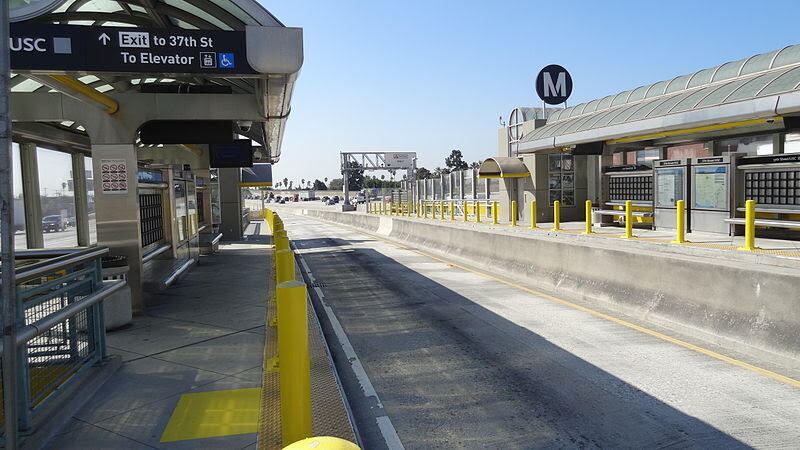This morning at Downtown Los Angeles’ Union Station, the new Metro Ambassador program was unveiled. With the introduction of the program, which will employ around 300 Metro Ambassadors into rail systems around the city, comes more skepticism from local residents.
Here’s Nina Moothedath with the story.
At a podium in Downtown Los Angeles’ Union Station, surrounded by local residents and leaders, a new safety measure for the L.A. Metro. was brought to light.
LA Metro is employing what they refer to as “Metro Ambassadors” -- unarmed individuals who’s role is to connect riders to resources and report safety concerns for the public. The new three-hundred ambassadors will seek to improve the overall quality and safety of user’s experiences on LA’s public transportation.
Ara Najarian: We’re hoping that metro ridership increases, that we have very few incidents of crime, overdose, homelessness, and that we can bring the system to an even higher level than we have it currently.
That was Ara Najarian, Chairman of the L.A. Metro Board of Directors and a city councilman from the City of Glendale. Najarian has broad hopes for the future of the ambassador program, but when it got to specifics about safety the Chairman looked more into the future than present actions.
The evolution of this program, from its ideation to its current employment, has finally morphed into a three-to-five year pilot program of non-armed local liasons.
Ara Najarian: Some of us, including myself, thought the answer was to increase by large numbers the numbers of law enforcement officers. The alternative that was raised by several directors was, you know what, we don’t need a full on armed officer for many of these instances. We can go with something less, something more friendly, and thereby the concept of the transit ambassadors came.
The role of Metro Ambassadors was initially more logistics-based, with less regard to safety. However, as crime and drug overdoses in the metro system increased, with this year’s number of deaths already tied with that of 2022, some last-minute changes had to be made.
Ara Najarian: We’re hoping that they’re going to be able to make the call. We can get help to that person. We’re hoping that they’ll be able to administer and get trained in the use of Narcan to help revive individuals in an emergency situation. So we hope that that’s going to help solve the drug use and abuse issue that we have in Metro.
So far, ambassadors haven’t been trained extensively in safety, with their main course of action being calling external forces for help if they see something occurring. Despite these mentions of an increased concern for safety, the Metro’s solutions are unclear for some riders. One of those riders is Steven Klotzsche, a resident of Los Angeles and a frequent user of the Metro.
Steven Klotzsche: They need to put more security. Doesn’t have to be armed police officers, but somebody that kind of keeps an eye on things.
Klotzsche has also noticed differences in safety depending on the line you ride around the city.
Steven Klotzsche: They need to improve that a little bit, especially when you go down, like to the blue line in Long Beach. Here it’s not so bad, but in the later hours, you got to be careful.
The program has been running since September of 2022, and despite Najarian’s hopes for success, only time will tell whether this program will ensure LA riders safer trips.
